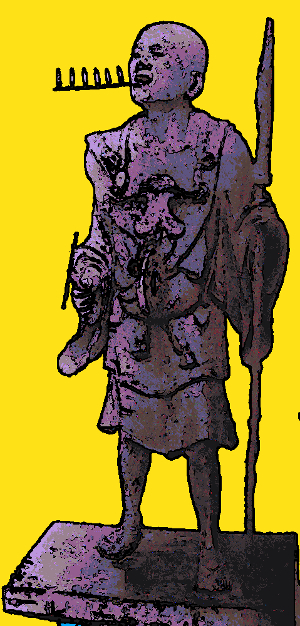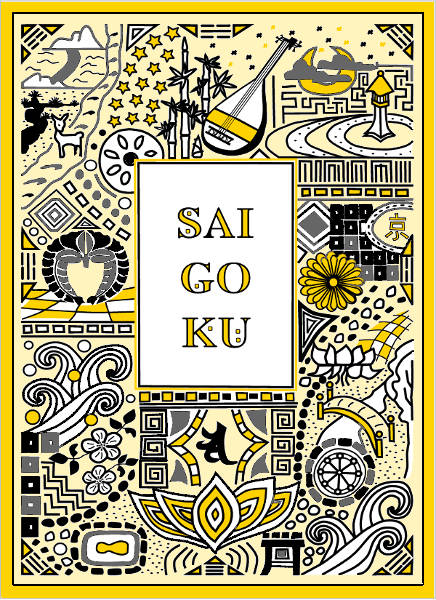Bringing light into dark times
At the turn of the millennium, in the 950 years, Japan was raged by plague and earthquakes. It was no longer possible to bury the dead. They were simply brought to the other side of Kyoto's Kamo river where they decayed. During these dark times, a monk called Kuya bought many corpses to bury them worthy. Singing, drumming and dancing, he traveled villages and markets. He sang "Namu Amida Butsu" - "I trust in Buddha". He was dancing with children in a circle and talked to the common people. He spoke of a religion that should not be limited to a wealthy elite.
His tradition of the Nembutsu chanting has survived to this day. It surpassed times when those dances and songs were banned. People danced in secret, using formulas like "Moda nan maito". The monks of Kyoto's Rokuharamitsu-ji still sing them today. On December, 13-31, from 4 p.m. it is possible to watch the performance of Nembutsu chants and dances. Or you join in. By the way, the statue of monk Kuya, which belongs to the Rokuharamitsu-ji, is an unusual masterpiece and worth visiting: six small Buddha are dancing from the mouth of the "weirdo of streets and markets" as Kuya used to be called, too.
 Saint Kuya is bringing light into dark times. Source: Wiki commons, own processing
Saint Kuya is bringing light into dark times. Source: Wiki commons, own processing
